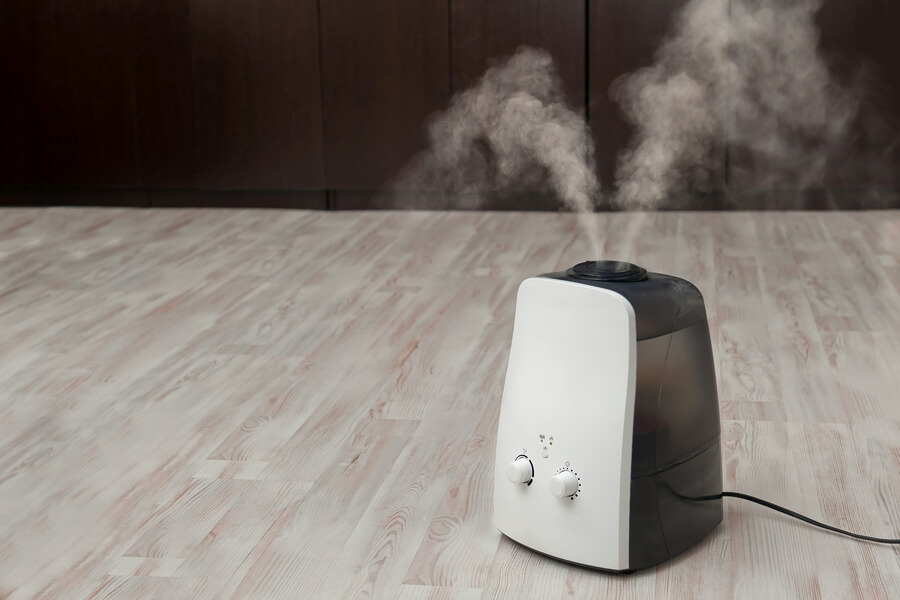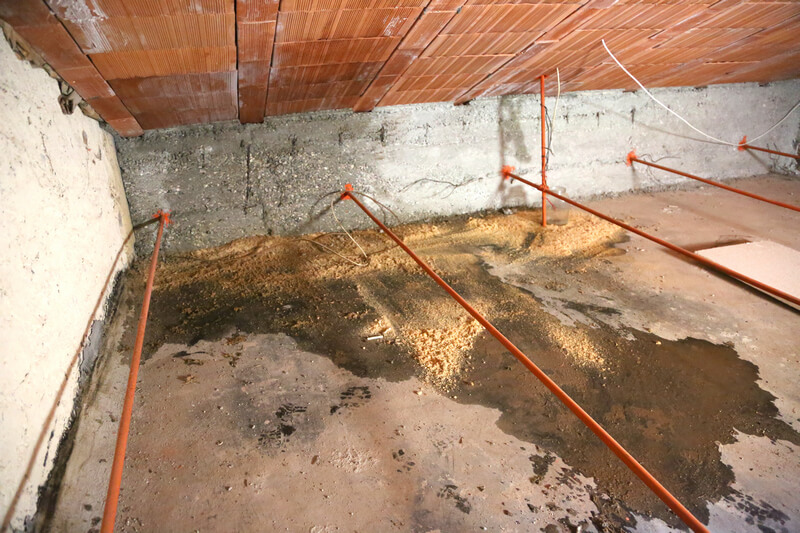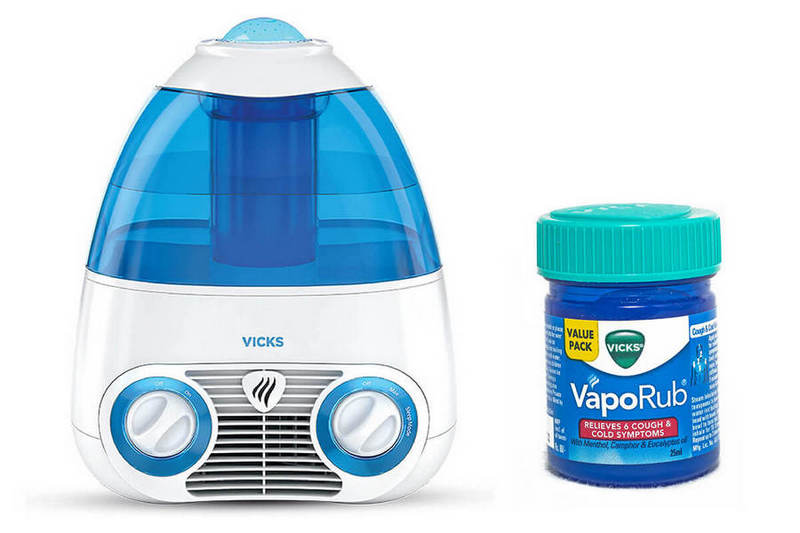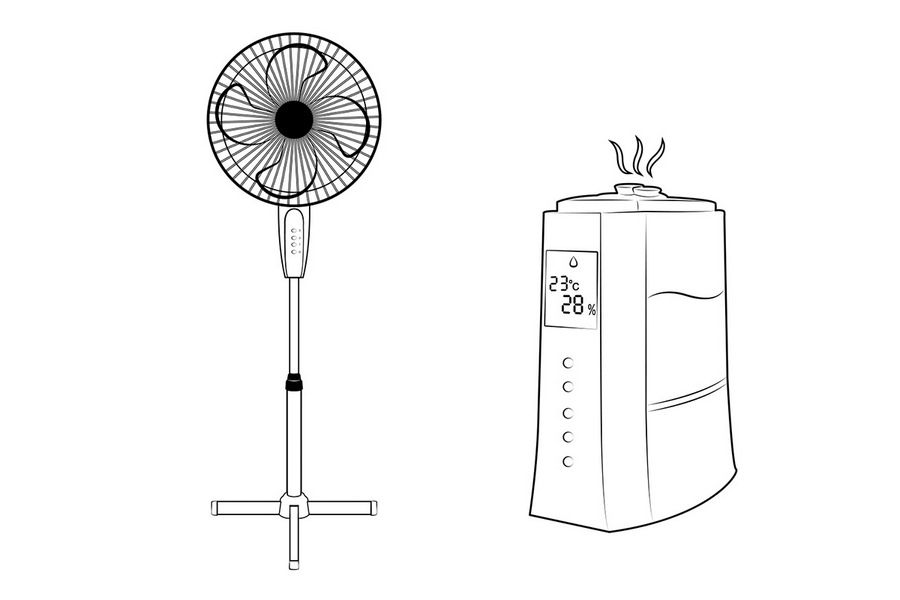First, we will look at the problem: why does my humidifier water turn black?
Second, we will present the possible causes and solutions:
- Too many mineral deposits: this can be resolved by using distilled water and cleaning the tank regularly.
- Presence of black mold: this can be prevented by keeping the unit dry when not in use.
Third, we will provide some additional information about the dangers of black mold and the importance of keeping your humidifier clean and dry.
By the end of this article, you’ll have a better understanding of why your humidifier water turns black and how to prevent it from happening in the future.
Reasons Humidifier Water Turns Black And How To Fix This
Too Many Mineral Deposits
Humidifier water may turn black when there are too many mineral deposits in the tank. This happens when hard water from the tap or water from other sources is being used in the humidifier instead of distilled water.
As evaporation turns water into steam, minerals such as calcium, magnesium, and sodium are left behind. These minerals tend to settle at the bottom of the tank and build up over time.
But if there’s one type of heavy metal that will surely cause your humidifier water to turn black, it would be manganese.
Most water sources contain various minerals and heavy metals, including manganese. High concentrations of oxidized manganese can give the water a black tint.
How to remove mineral deposits
Here’s how to remove mineral deposits from your humidifier’s reservoir:
- Remove the tank. But before doing so, make sure you have unplugged your humidifier from the outlet. Otherwise, you will be at risk of an electric shock.
- Empty the tank and dry it with a paper towel or microfiber cloth.
- Pour a 1:1 ratio of water and vinegar solution into the tank. Let the solution soak for half an hour. Scrub the tank’s interior with a toothbrush to remove the mineral deposits.
- Empty the tank and rinse it out with water. If needed, use more water to make sure all the residues are removed. Never use soap when rinsing the tank with water as it can leave behind some residues.
- Use a toothbrush coated in white vinegar to remove mineral buildup in the humidifier’s water (or mist) outlet. Rinse with water.
- Reassemble the humidifier. Make sure it has completely dried off before turning it on.
An excellent way to prevent the buildup of mineral deposits in the humidifier is to use distilled water. Do not use hard water from the tap, rainwater, or water from other sources that may contain minerals or hard metals.
Using distilled water for your humidifier requires minimal upkeep since the chance of a mineral buildup is low. Also, the air released from the unit is safer and smells better than tap or rainwater.
Presence of Black Mold
Another reason why humidifier water may turn black is the presence of black mold in your unit. The black stuff in your humidifier could be Stachybotrys chartarum. It is a greenish-black mold that breeds and thrives in enclosed moist environments.
Typically, black mold is often found in spots where there is excessive moisture. Constant or excessive moisture is often caused by:
- Condensation
- Water infiltration
- Water damage
- Water leaks or
- Flooding
Common spots that serve as breeding grounds for black molds are old pipes, leaky roofs, and poorly sealed windows. Also, they can grow on your furniture’s fabric and papery materials such as those in drywalls and cardboard.
Moreover, dirty humidifier tanks and filters can promote bacteria and mold growth. Your humidifier’s moist interior is an ideal breeding ground for fungi and bacteria.
This black stuff often creates a sludge on the surface of the water. Sludge buildup may also occur on the sides of the tank. Sometimes, black mold may appear as tiny black spots in the water.
How to prevent mold growth
To prevent black mold from building up will require monitoring of humidity levels. You can keep track of your home’s humidity level using a hygrometer. The idea is to ensure indoor air humidity does not cross 50% or does not get too high.
When not in use, drain the tank and keep the unit dry. You can place a packet of baking soda in the tank to prevent moisture from building up.
Is Black Stuff In Humidifier Water Dangerous?
The black stuff in your humidifier’s water is most likely the greenish-black mold called Stachybotrys chartarum. Commonly known as black mold or toxic indoor mold, it is a type of fungus that produces mycotoxin.
Black molds often thrive in damp environments. They can grow indoors and outdoors. Also, they look like black splotches in the showers, basements, and garages.
Heavy and prolonged exposure to black mold has been known to cause a variety of respiratory, dermatological, eye, and constitutional symptoms in people. Moreover, this black stuff can cause a certain type of hemorrhage in infants, which can lead to their death.
Accordingly, it led many to believe that the toxin in the black mold can kill people. But one study concluded that prolonged exposure to black mold does not cause infant illness and death.
That being said, an updated 2002 report confirms that black mold is toxic and can potentially cause certain diseases.
Key Takeaways
Black water in your humidifier is often caused by the oxidation of manganese and other different minerals that have accumulated at the bottom of the tank. Dirty humidifier tanks and filters are breeding grounds for black mold. Monitor your indoor air’s humidity level and keep your unit dry when not in use.
The key to avoiding these issues with humidifiers is to clean them regularly and use the right type of water for your unit.
Read next: Common problems with humidifiers







